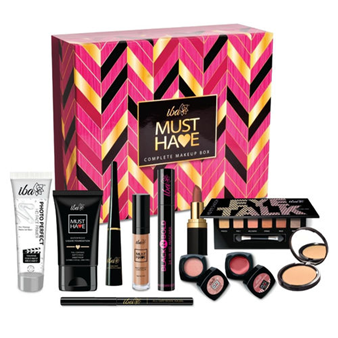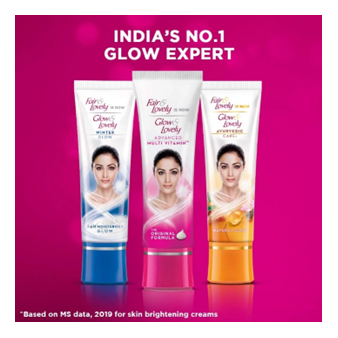Cultural Misalignment: The Hidden Derailer of Brands
This dialogue is addressed to my fellow brand strategists and planners at communications agencies as well as marketers.
CS:  In four decades of brand theorizing, pretty much all of the problems that befall brands have been well identified and well understood. And the standard problems are known to all. Is there something more or new that Semiotics can bring to brand strategy?
In four decades of brand theorizing, pretty much all of the problems that befall brands have been well identified and well understood. And the standard problems are known to all. Is there something more or new that Semiotics can bring to brand strategy?
FT:  Yes, it is true that what ails brands and what can create brand problematics is well known and well established. One problem that is often talked about, but is hard to diagnose formally without a semiotic study is cultural misalignment. Cultural misalignment can happen in two ways.
Yes, it is true that what ails brands and what can create brand problematics is well known and well established. One problem that is often talked about, but is hard to diagnose formally without a semiotic study is cultural misalignment. Cultural misalignment can happen in two ways.
- The brand gets caught in the crossfire of culture change
- The brand communication is off the culture codes and hence there is going to be an audience disconnect
Let’s first examine how brands end up getting caught in the crossfire of culture change.
This happens when brands fall behind culture changes within their category and thus begin to lose resonance and relevance with consumers, especially the next generation. Every marketer and brand expert knows about this problem when they are looking in, from the outside.
However, what happens is that, on the inside, this problem is largely not recognized or recognized too late. Within large organizations it is hard to identify cultural misalignment as the root cause of brand decline. The first sign of brand decline is falling, slowing or flattening sales. When sales start to slow down or decline for a brand’s products or services, many hours of discussion take place to diagnose the causes. This is particularly true if the brand is old, established and central to the company’s revenues and profits. Many different hypotheses are proposed and there is always organizational politics at work in which functions push the blame out to other functions.
Eventually, they try to diagnose and solve the problem by voice of consumer research. Consumers rarely voice cultural misalignment as a possible and important reason for rejecting the brand or shifting to competitor brands. Consumers will only voice the outcome, which is that they now find competitor brands and their products more exciting and seem to have lost interest in the company’s brand. Or that they don’t like some feature in the product. And that they have changed their behaviours and habits – they will certainly give the reasons why for the changed behaviour.
CS:  Could you give some examples so that I can understand this problem better?
Could you give some examples so that I can understand this problem better?
FT:  I can cite a couple of examples basis work that we have done, either directly for the client or through our own cultural research.
I can cite a couple of examples basis work that we have done, either directly for the client or through our own cultural research.

The first is in the make-up category. This category has been transformed by social media and influencer marketing as well as e-commerce, viz the digital revolution. As a result, young (16-28 years) women’s knowledge, attitude and practices towards make up are totally different from previous generations. The kind of glamour imagery that appeals to and connects with them is also very different from older generation women. The Client’s brand had a very weak presence on e-comm and their glamour imagery was totally off from the cultural codes that connect with the younger generation. This cultural misalignment had resulted in flattening sales and needed to be corrected for the brand to start growing again.
The second is the fairness cream category. Among the affluent, young women in cities (the most sought after demographic for the brand’s future), even if they desire fairer / lighter skin, the cultural discourse has become extremely loaded against colourism and racism. So, brands in this category are literally caught in the crossfire of culture wars. How well they navigate all the contradictions will determine their future relevance and growth.


A third example is the coconut hair oil category. Young Indian women haven’t lost their cultural regard for coconut oil as great for hair health and the thick, long, black hair as the ultimate ideal for hair. Yet, in terms of behaviour, they don’t oil their hair even once a week and focus much more cutting, styling and colouring their hair. They are very open to using all kinds of hair products and strong chemicals to give their hair the ‘right look’ for Insta pictures and posts. Here, there is a complete disconnect between the symbolism, claims and behaviour – a perfect case of hidden cultural misalignment.
As the examples above illustrate, cultural misalignment is often woven with other issues such as absence in certain geographies or retail channels, tech backwardness and so on. So, it becomes particularly hard to identify and pin-down.
CS: Got it.  What about culturally misaligned ads? Does this really happen? Don’t the creatives and marketing team know? After all, they are members of the culture.
What about culturally misaligned ads? Does this really happen? Don’t the creatives and marketing team know? After all, they are members of the culture.
FT:  Yes, this is true…that the team are members of the culture and know its limits and boundaries. However, due to various pressures or perceptions about social classes, or ignorance about the TG, they can forget or overlook the culture aspect.
Yes, this is true…that the team are members of the culture and know its limits and boundaries. However, due to various pressures or perceptions about social classes, or ignorance about the TG, they can forget or overlook the culture aspect.
So, here are three examples.
Aquawhite is a proprietary brand from the house of JHS Svendgaard Laboratories Limited. They ran the campaign below. As a small brand and new entry, their goal was to get consumer attention. In order to do that, they ran ads with strong overtones of sexual innuendo. This is totally off the cultural code for a conservative country like India. From my 14 years of experience working in three different offices of JWT, I know that people who work in advertising in India are very free with four letter words and are comfortable with sexual innuendo. So, they may have lost sensitivity to the mentality of the audience. Aqua White has since then, changed its positioning to address kids.
- Aqua White Toothpaste Ad-1
- AquaWhite Toothpaste Ad-2
- https://www.youtube.com/results?search_query=tiger+shroff+aquawhite
Fabelle Chocolates: In this ad, that features a mother and son, the entire portrayal of the mother-son relationship is “off-code” for our culture. Being a luxury chocolate, this could be a representation of the globalized Indian elite or an Indian Imaginary of ‘Western’ culture.
https://www.youtube.com/watch?v=EWHU0UOdIsY
These kinds of cultural misalignment errors can also happen when the creative teams writing the scripts and the marketing team approving the scripts have no exposure or knowledge of the target audience. We did a project in which we were asked to diagnose why the Client’s ads failed completely among rural Bengal audiences. Our semiotic decoding revealed that the ads were culturally misaligned and that caused the disconnect.
CS:  What is the way to address this problem of cultural misalignment of the brand or the ads?
What is the way to address this problem of cultural misalignment of the brand or the ads?
FT:  Cultural misalignment of brand image can only be diagnosed through semiotic decoding of cultural discourse and matching that to the brand’s discourse and symbolism. In more technical language, it is important to identify the cultural codes in popular culture/category representations and match it to the brand’s codes to identify the gaps. A similar approach has to be taken for cultural misalignment of ads as well.
Cultural misalignment of brand image can only be diagnosed through semiotic decoding of cultural discourse and matching that to the brand’s discourse and symbolism. In more technical language, it is important to identify the cultural codes in popular culture/category representations and match it to the brand’s codes to identify the gaps. A similar approach has to be taken for cultural misalignment of ads as well.
The solution lies in building forward from there – changing the brand’s symbolism and narratives to bring back the cultural resonance and relevance. As cultural discourse reveals the problem, it also reveals potential solutions.
CS:  OK, so here are my three takeaways and action points from this discussion with you.
OK, so here are my three takeaways and action points from this discussion with you.
- Cultural misalignment is a problem that is hidden in plain sight. The team needs to focus on it in order to diagnose and correct it. Too often, the problem is never diagnosed as culture is completely taken for granted.
- Cultural misalignment for brands and their communication is a problematic of Semiotics – the signs, symbols and narratives used are out-of-step with culture.
- It takes an expert semiotics team to work out the cause of the problem as well as the potential and possible solutions.

